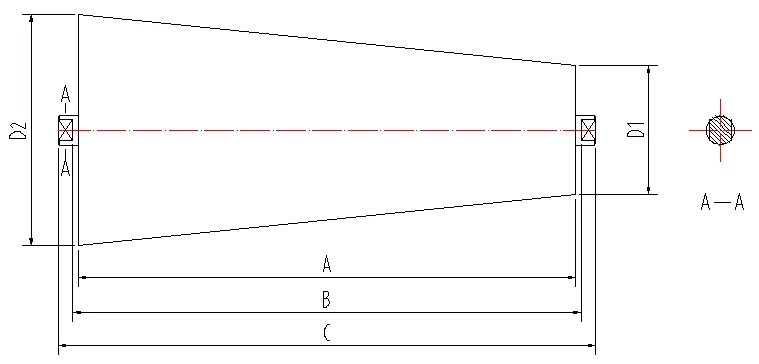 Afrikaans
Afrikaans  Albanian
Albanian  Amharic
Amharic  Arabic
Arabic  Armenian
Armenian  Azerbaijani
Azerbaijani  Basque
Basque  Belarusian
Belarusian  Bengali
Bengali  Bosnian
Bosnian  Bulgarian
Bulgarian  Catalan
Catalan  Cebuano
Cebuano  Corsican
Corsican  Croatian
Croatian  Czech
Czech  Danish
Danish  Dutch
Dutch  English
English  Esperanto
Esperanto  Estonian
Estonian  Finnish
Finnish  French
French  Frisian
Frisian  Galician
Galician  Georgian
Georgian  German
German  Greek
Greek  Gujarati
Gujarati  Haitian Creole
Haitian Creole  hausa
hausa  hawaiian
hawaiian  Hebrew
Hebrew  Hindi
Hindi  Miao
Miao  Hungarian
Hungarian  Icelandic
Icelandic  igbo
igbo  Indonesian
Indonesian  irish
irish  Italian
Italian  Japanese
Japanese  Javanese
Javanese  Kannada
Kannada  kazakh
kazakh  Khmer
Khmer  Rwandese
Rwandese  Korean
Korean  Kurdish
Kurdish  Kyrgyz
Kyrgyz  Lao
Lao  Latin
Latin  Latvian
Latvian  Lithuanian
Lithuanian  Luxembourgish
Luxembourgish  Macedonian
Macedonian  Malgashi
Malgashi  Malay
Malay  Malayalam
Malayalam  Maltese
Maltese  Maori
Maori  Marathi
Marathi  Mongolian
Mongolian  Myanmar
Myanmar  Nepali
Nepali  Norwegian
Norwegian  Norwegian
Norwegian  Occitan
Occitan  Pashto
Pashto  Persian
Persian  Polish
Polish  Portuguese
Portuguese  Punjabi
Punjabi  Romanian
Romanian  Russian
Russian  Samoan
Samoan  Scottish Gaelic
Scottish Gaelic  Serbian
Serbian  Sesotho
Sesotho  Shona
Shona  Sindhi
Sindhi  Sinhala
Sinhala  Slovak
Slovak  Slovenian
Slovenian  Somali
Somali  Spanish
Spanish  Sundanese
Sundanese  Swahili
Swahili  Swedish
Swedish  Tagalog
Tagalog  Tajik
Tajik  Tamil
Tamil  Tatar
Tatar  Telugu
Telugu  Thai
Thai  Turkish
Turkish  Turkmen
Turkmen  Ukrainian
Ukrainian  Urdu
Urdu  Uighur
Uighur  Uzbek
Uzbek  Vietnamese
Vietnamese  Welsh
Welsh  Bantu
Bantu  Yiddish
Yiddish  Yoruba
Yoruba  Zulu
Zulu Optimizing Feeder Idler Systems for Enhanced Performance and Efficiency
Understanding Feeder Idlers in Material Handling
In the realm of industrial material handling, the feeder idler plays a crucial role in the efficiency and effectiveness of conveyor systems. These components, often unassuming in appearance, serve important functions that facilitate the seamless movement of materials from one point to another. This article explores the significance of feeder idlers, their design, applications, and the impact they have on overall system performance.
What is a Feeder Idler?
A feeder idler is a type of roller used in conveyor systems that aids in the distribution and transportation of bulk materials. Typically positioned at the loading point of a conveyor, these idlers are designed to support the belt and maintain its alignment while carrying heavy loads. The primary function of a feeder idler is to help control the flow of materials onto the conveyor belt, ensuring an even distribution that optimizes handling efficiency.
Design and Construction
Feeder idlers come in various designs, depending on the specific needs of the application. They are generally constructed from durable materials such as steel or heavy-duty plastic to withstand the harsh conditions of material handling environments. The rollers can be designed with different diameters and widths, allowing them to accommodate various belt sizes and types of materials.
In many cases, feeder idlers incorporate features such as self-aligning capabilities and impact resistance. Self-aligning idlers help maintain the correct positioning of the conveyor belt, which is critical for preventing misalignment and reducing wear on the belt and other components. Impact-resistant features are essential in applications where heavy or abrasive materials are handled, as they mitigate the risks of damage to both the idler and the conveyor system.
Applications of Feeder Idlers
feeder idler

Feeder idlers are widely used across various industries, including mining, construction, agriculture, and recycling. In mining operations, for example, feeder idlers are essential for transporting minerals and aggregates from extraction sites to processing facilities. Their ability to handle large volumes of material efficiently makes them invaluable in these heavy-duty applications.
In agriculture, feeder idlers are used in grain handling systems where they facilitate the movement of grains from storage to processing machines. Their design helps prevent spillage and ensures that the materials move smoothly and evenly, optimizing throughput.
The recycling industry also benefits significantly from feeder idlers, as they help convey a diverse range of materials, from metals to plastics, in a way that enhances sorting and separation processes. The versatility of feeder idlers in accommodating different materials and conditions makes them a vital component in modern recycling operations.
Efficiency and Performance Impact
The role of feeder idlers in enhancing the efficiency of conveyor systems cannot be overstated. By maintaining the proper alignment and flow of materials, these components reduce the chances of bottlenecks and delays that could hinder operations. When feeder idlers are functioning optimally, the entire material handling system runs more smoothly, leading to increased productivity and reduced operational costs.
Furthermore, proper maintenance of feeder idlers is crucial in preserving their performance. Regular inspections and timely replacements can prevent unforeseen breakdowns that could disrupt production. Investing in high-quality feeder idlers and implementing a maintenance schedule can significantly enhance the longevity and reliability of conveyor systems.
Conclusion
In conclusion, feeder idlers are an integral part of modern material handling systems, offering essential support and efficiency in the transportation of bulk materials. Their design and functionality cater to various industrial applications, making them indispensable in sectors ranging from mining to agriculture. By prioritizing their maintenance and understanding their importance, organizations can improve their material handling operations, paving the way for enhanced productivity and success in the ever-evolving industrial landscape.
-
Trusted Conveyor Solutions from Leading Conveyor Idler Roller ManufacturersNewsJun.27,2025
-
Reliable Return Idler Solutions for Efficient Belt Conveyor SystemsNewsJun.27,2025
-
Precision Conveyor Accessories for Streamlined Material HandlingNewsJun.27,2025
-
High-Quality Belt Conveyor Idler Solutions for Efficient Material HandlingNewsJun.27,2025
-
High-Performance Belt Conveyor Pulleys for Reliable Material HandlingNewsJun.27,2025
-
Enhancing Material Handling EfficiencyNewsJun.27,2025





























